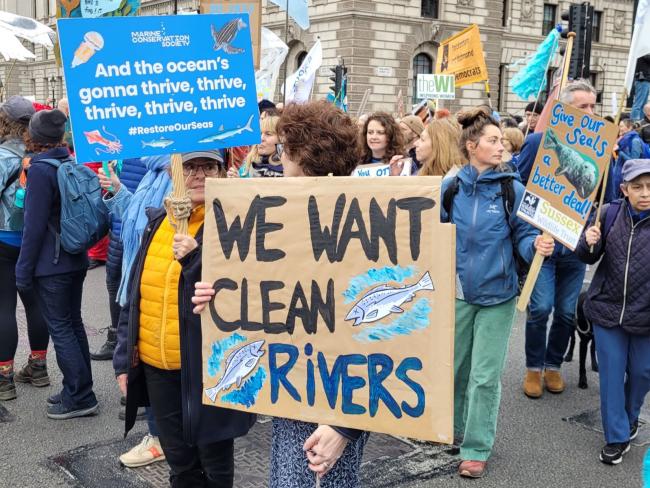2 June 2025

March for Water, London, November 2024, campaigning against river and coastal pollution by water companies. More housing will increase the need for improvements. Photo Workers.
The government’s plan to deal with the crisis in housing focuses on building homes. It ignores problems of affordability for both rental and owner-occupation. And it also overlooks basic infrastructure needs too, which residents in Buckinghamshire are challenging.
The Labour government has committed to addressing the housing crisis by building 1.5 million new homes over next five years. Or rather, it hopes private developers will build and sell them.
More capacity
But whoever builds them, new houses will require more sewage capacity. Developers and councils may be able to build without enough provision for schools, GP surgeries and buses, but they can’t do without sewage connection and treatment.
To meet its commitment, the government wants to ease planning controls. The Planning and Infrastructure Bill currently before Parliament is intended to overhaul the planning system.
‘Environmental requirements on developers will be reduced.’
Promising to “turbocharge growth”, Chancellor Rachel Reeves has stated that the government will reduce environmental requirements placed upon developers so they can focus on getting things built.
Not everyone is convinced. An environmental charity, Wildfish, has been given permission to legally challenge a planning decision in favour of a proposed Buckingham housing development of 170 homes. It’s doing so on the grounds that the already overstretched local sewage treatment system would be unable to cope with treating the extra waste generated by the additional residents.
Pollution
The local water company, Anglian Water, has no plans to upgrade the sewage facilities. A local campaign has started. Supported by Wildfish, it opposes the development on the grounds that the extra sewage will inevitably end up polluting the local river, the Great Ouse.
Anglian Water stated over ten years ago that its Buckingham treatment site did not have any capacity to support new housing developments. Since then, planning permission has been granted for 1,500 homes in and around Buckingham; hundreds are already built.
Objecting
In nearby Oxford, concerns over sewage capacity led to the Environment Agency objecting to all new development. This put at risk plans for up to 18,000 new homes in the city. Pressure from developers including powerful Oxford University colleges has forced a commitment to upgrade the sewage treatment works, allowing homes to be built by 2027.
But not all areas have developers with the clout to force additional sewage capacity to be provided. And if Wildfish’s judicial review is successful it could stop the Buckingham development going ahead, and put many future housing proposals in doubt.
Fewer starts
• The number of houses built since the election isn’t at a level to meet the Labour commitment, which would need an average of around 300,000 new dwellings completed every year – a level that hasn’t been met for about 50 years.
Despite positive-sounding announcements, there’s little sign of a change compared to previous governments. Official figures show fewer starts and completions in 2024 compared to the previous year.
